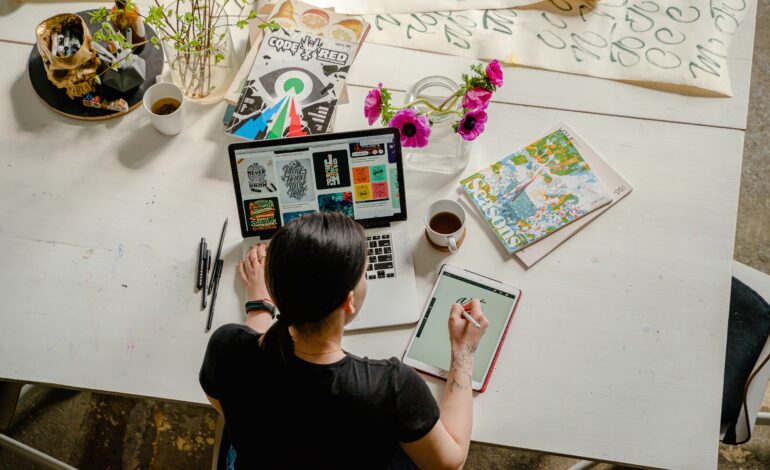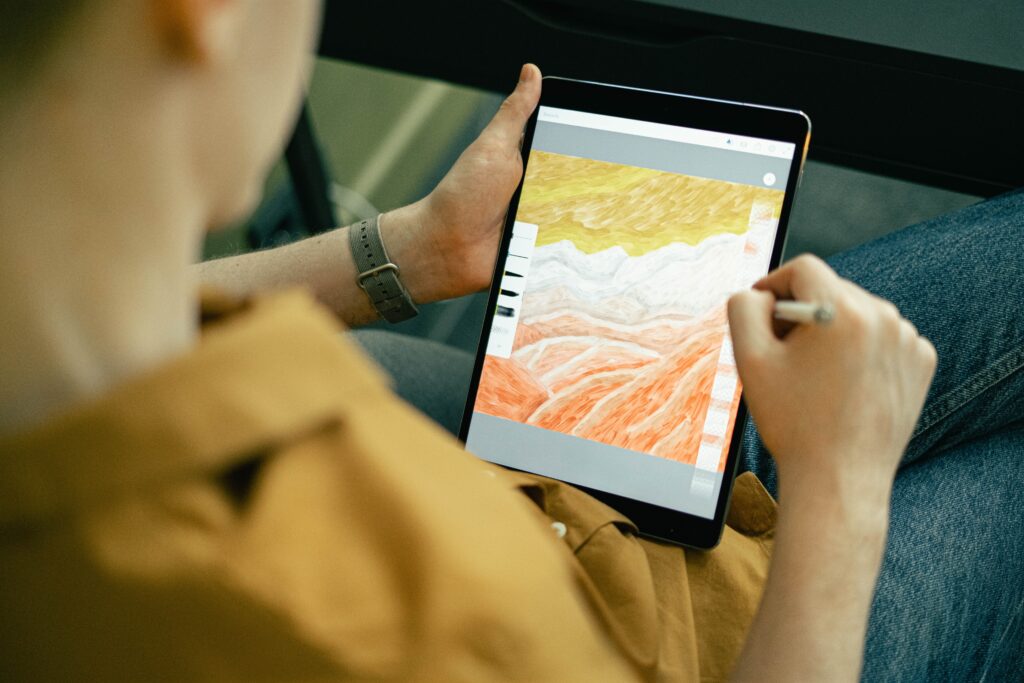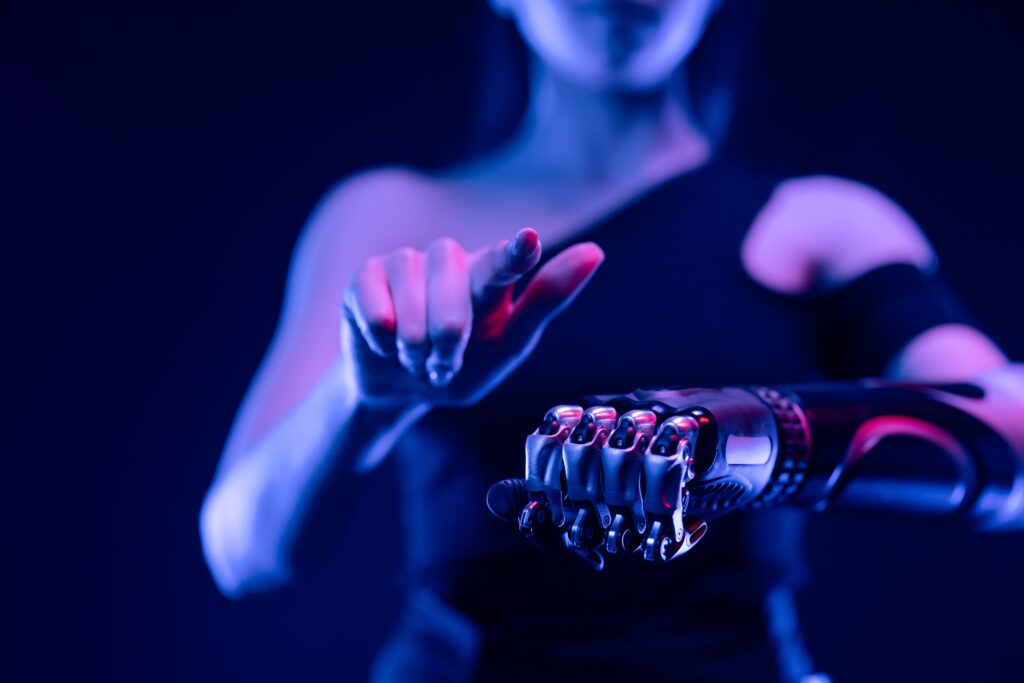
Art and technology have been intersecting for centuries. Artists have used new technologies to make art, and new technologies have been used to create works of art. But the intersection has become increasingly prominent and influential in recent years. For example, contemporary artists have used technology in novel ways to create works that are more immersive or interactive than ever before. They have also created works that use technology in ways that challenge our understanding of what counts as art. ‘
In this article we will discuss some ways in which the two fields have merged to become one–a new area that is still being explored by artists and designers around the world:
Digital Art

Digital art has been around since the 90s, but it’s only recently become a fully-fledged art form. Digital artists use software, virtual reality (VR), augmented reality (AR), and other digital tools to create interactive and immersive experiences. This has expanded the possibilities for artistic expression and audience engagement.
While digital art is still relatively new, it’s already had a major impact on how we think about art. Digital artists are able to create images that transcend traditional mediums by using code as their paintbrush and a computer as their canvas. This has given rise to an entirely new way of thinking about what constitutes an “artwork” and how we interact with it.
Digital artwork often involves interaction between viewer and artwork; sometimes this interaction is very direct (such as clicking on an image), but other times there may be more subtle ways for viewers to interact with digital artworks. Some digital artists are also interested in creating content that allows for multiple perspectives or interpretations by viewers—a hallmark of many traditional forms of art such as painting or sculpture.
New Forms of Expression
Art is getting a new medium. With technology developing at a rapid pace, artists are finding new ways to express themselves. Generative art and algorithmic art are just two of the many ways that artist can harness the power of code and algorithms to create dynamic, ever-changing artworks that challenge traditional notions of static art.
Generative art uses code and algorithms to create an infinite number of unique pieces of art, often based on natural phenomena or mathematical principles. Algorithmic art is similar but does not require an infinite number of variations; instead, it creates variations based on a set number or within certain parameters. Interactive installations are another way that technology can be used in the visual arts: they allow viewers to interact with the artwork in real time.
Virtual Reality and Augmented Reality
Virtual Reality and Augmented Reality have revolutionized the way we experience art. Artists can create virtual galleries, immersive environments, and interactive sculptures that viewers can engage with in three-dimensional space. VR is the creation of an immersive environment through the use of a headset and controllers. The wearer can move around within this environment and interact with it in a natural way. The headset provides stereoscopic images that are displayed to each eye in a way that creates the illusion of depth and immersion.
AR is a technology that overlays computer generated images on top of real-world objects or settings. This allows users to interact with these images in their physical space.
Artificial Intelligence
Artificial intelligence (AI) technologies have been used to create art, whether by generating images, composing music, or even writing poetry. AI algorithms can analyze existing artworks to generate new pieces that mimic certain styles, blurring the lines between human and machine creativity.
Artificial intelligence has been used in the arts for decades. In 1961, RAND developed a computer program called “PSAM” (Pattern Recognition And Memory) to design original paintings that resembled those of Pablo Picasso. The first AI-generated painting was called “The Artist’s Mother,” and it was produced by New York University’s Donald Knuth in 1962.
AI systems are also capable of producing original music based on an artist’s style or genre of music. For example, Google used its DeepDream algorithm to analyze the works of Ludwig van Beethoven and Wolfgang Amadeus Mozart; from these analyses came new compositions inspired by their work.
Bioart and Biotechnology
In the modern art world, there is a growing trend of artists who are exploring the intersection of art and biotechnology. These artists create living artworks by manipulating living organisms or using biologically derived materials. This raises questions about the ethical implications of using life itself as an artistic medium.

For example, one artist has used a genetically modified strain of bacteria to create an artwork that slowly reacts to its environment over time. Another artist has created a series of paintings with pigments derived from various species of birds’ feathers. The use of biological material in art raises interesting questions about the boundaries between science, art, and nature.
Data Visualization
Data-driven art visualizes complex information in creative and compelling ways. Artists use data visualization techniques to represent trends, patterns, and narratives hidden within large datasets.
In today’s digital world, it is more important than ever for humans to be able to understand large amounts of data quickly and effectively. The ability to translate complicated information into something that anyone can understand is crucial for our survival. Data-driven art allows us to see the world in new and exciting ways by helping us make sense of huge amounts of data.
The artists who create these pieces are often inspired by their own personal experiences or by current events in popular culture. They may also choose to create visualizations based on scientific research or historical facts that they think are important enough to share with others through their work.
The intersection of art and technology offers both exciting opportunities and challenges. It pushes the boundaries of traditional artistic practices and prompts us to reconsider the nature of creativity, authorship, and the role of the audience. As technology continues to evolve, this intersection will likely lead to even more innovative and transformative possibilities for artistic expression.
RUCHI RATHOR Founder & CEO
Payomatix Technologies Pvt. Ltd.
FOUNDER AND INVESTOR | PAYMENTS PROCESSING EXPERT | MERCHANT ACCOUNT SOLUTIONS | WHITE LABELLED PAYMENT GATEWAY | Dreamer, Creator, Achiever, Constantly Evolving
Website Ruchi Rathor: https://ruchirathor.com
Website Healing Heart https://thehealingheart.me/
Instagram https://www.instagram.com/ruchirathor/
LinkedIn https://www.linkedin.com/in/ruchirathor12/
Facebook https://www.facebook.com/ruchi.rathor.magnificient
Tumblr https://www.tumblr.com/blog/ruchirathor-thehealingheart
Medium https://medium.com/@ruchirathor_23436









